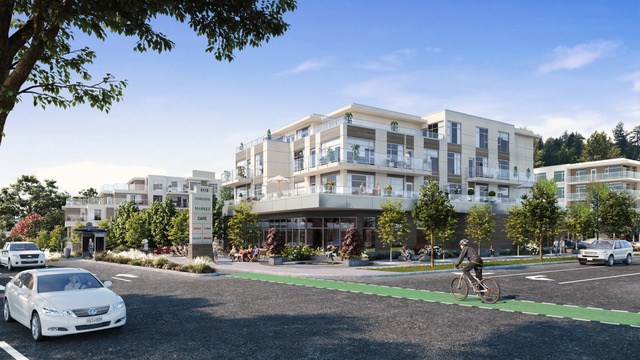Nearly 60 years ago, the remains of a First Nations girl were discovered when land was being excavated for the former Cordova Bay Plaza.
Now that the site is headed for redevelopment, the province’s archeological branch is requiring a special permit to start work.
Architect Alan Lowe, representing developer Kang and Gill, said on Monday that the project’s consultant is preparing the application for the needed permit given that the property is now considered an archeological site.
A provincial spokesman said that the permit application will be distributed to First Nations for comment and responses will be taken into consideration if a permit is issued.
There is little detail about what was found at the site, the spokesman said.
The developer is also in the process of obtaining an excavation permit from the District of Saanich, said Lowe.
Construction has not yet started. The former commercial plaza on this property in the 5100 block of Cordova Bay Road has been torn down.
Its four-storey replacement, approved by council earlier this year, has been a contentious issue in that neighourhood.
The plan calls for a grocery store, bank, pharmacy, coffee shop and possibly a medical clinic, as well as 91 condominiums and an underground parkade.
Lowe said that an archeology professor informed the province that human remains had been found in 1960.
He received a letter Thursday from B.C.’s archeological branch that included a copy of a brief article that ran in the Victoria Daily Times.
The June 16, 1960 story said that the skeleton of a young First Nations girl, “believed to have died more than 100 years ago,” was unearthed at the clearing of a parking site at the new Cordova Bay shopping plaza.
“The remains were found about 18 inches under the top soil.
“George S. Polson, whose firm is doing the work, said he found a ‘couple of others’ in the same area in 1955.”
No other details were included. The story did not explain what happened to the remains.
The archeological branch’s letter to Lowe stated that the site’s boundaries are poorly defined, adding that there might be “additional site deposits, or new sites, within the development footprint that need to be addressed.”
Sites with ancestral remains are not uncommon, especially within ancient village sites, the B.C. spokesman said. “In total, there are 1,566 recorded sites with ancestral remains of First Nations peoples, out of the total of 48,579 archeological sites recorded within the province.”
On 91原创 Island, there are 667 archeological sites with ancestral remains, out of 3,978 sites recorded on the Island, the official said.
The remains of ancient village sites are common along B.C.’s coast, and can stretch for more than a kilometre along a coastline, he said.
These days, historical remains are treated with respect when discovered or returned.
For example, in 2016, a funeral was held at the University of Victoria to return First Nations ancestral remains from storage at the university to the Esquimalt and Songhees First Nations. The remains had come to the university in earlier decades when there was little protocol for handling of remains and they had been kept in storage.



